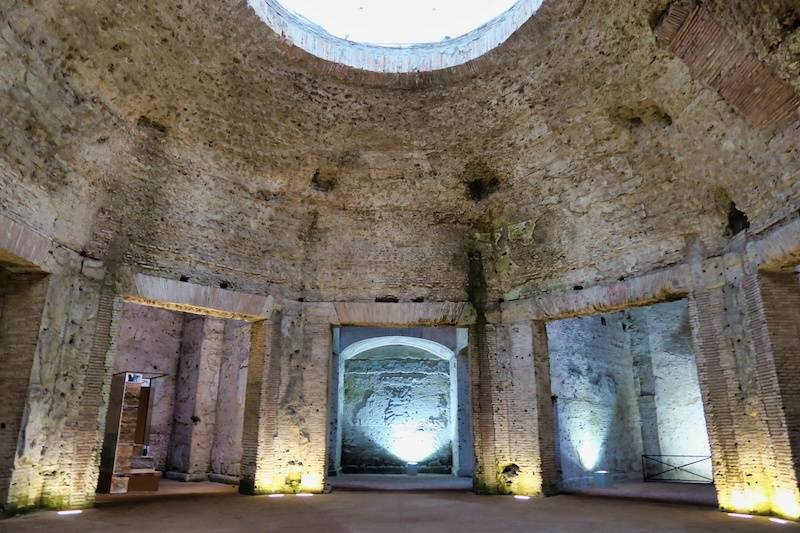“Good! Finally I can start living like a human being! (Nero, entering his Domus Aurea for the first time)'”
(Suetonius, Nero, 31.2.)
The Domus Aurea (“House of Gold” in Latin, just as they used a lot of this precious metal in it) was the urban villa built by the Roman emperor Nero after the great fire that ravaged Rome in 64 AD. The destruction of a large part of the urban center allowed the princeps to expropriate a total area of about 80 hectares and build a palace there, stretching between the Palatine, the Esquiline and the Caelian.
The villa, probably never completed, was destroyed after Nero’s death following the restitution to the Roman people of the land on which it stood. The surviving part of the Domus Aurea, obscured by Trajan’s later baths, like the entire historic center of Rome, the extraterritorial areas of the Holy See in Italy and the basilica of St. Paul’s Outside the Walls, was inscribed on the UNESCO World Heritage List in 1980.
Carandini adds that it was not just one large residence, but a collection of buildings and green spaces, which later inspired the great Villa Adriana on the outskirts of Tivoli.
Let’s discover the history of this historic site that you can discover with us with a Private Tour of the Colosseum.
The history of the Domus Aurea
So, after the devastating fire of 64 AD, which destroyed much of the centre of Rome, the emperor Nero began building a new residence, which for pomp and splendour went down to history by the name of the Domus Aurea.
Designed by architects Severus and Celer and decorated by the painter Fabullus, the palace consisted of a series of buildings separated by gardens, woods and vineyards and an artificial lake, which lay in the valley where the Colosseum stands today. The main nuclei of the palace were on the Palatine Hill and Oppian Hill and they were famous for the sumptuous decoration in which gold and precious stones were added to stuccos, paintings and coloured marbles. The huge complex included bathrooms with normal and sulfurous water, several banqueting rooms, including the famous coenatio rotunda, which rotated on itself, and a huge vestibule that housed the colossal statue of the emperor in the garments of the Sun God.
After Nero’s death his successors decided to erase all traces of the emperor and his palace. The luxurious chambers were deprived of their cladding and sculptures and filled in with earth up to the vaults to be used as the substructures for other buildings.
Visiting the Domus Aurea today
The parts that can be visited today are those on the Oppian hill: these areas were probably used for holding festivities and banquets. After they were buried, they remained unknown until the Renaissance. Only then, after some chance discoveries, did artists with a passion for antiquities, such as Pinturicchio, Ghirlandaio, Raphael and Giulio Romano, begin to explore what they thought of as “underground grottoes”, to copy the decorative motifs in them. Because of their location, they were called “grotesques.” Even today the term “grotesque painting” is used to indicate a genre, very common above all in the 16th century, which imitates the patterns of Roman wall decoration, reworking and reinterpreting them in playful and imaginative ways.


